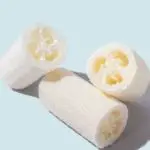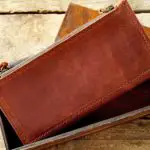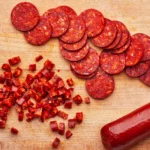Denim is one of the most iconic and widely-known fabrics across the world. Nearly every single one of us owns a denim product, with denim jeans being the most popular.
Whether it’s date night or a Friday night on the town, most of us will opt to wear our favorite pair of denim jeans.
Denim has been a wardrobe staple since the 1800s, and the fabric has such a rich and interesting history – but where does it come from, and where is it made?
Read on to learn all about the world of denim!
History of Denim
People often credit Jacob Davis and Levi Strauss – from the Levi brand – with inventing denim back in 1873. However, they were actually inspired by a cotton corduroy fabric called “Serge de Nimes” that originated in Nimes, France. It became a pretty popular cotton weave style throughout the region, and it soon started gaining popularity outside of France.
Denim first became popular in the United States during the Gold Rush in 1853 thanks to Levi Strauss. Strauss opened up a shop in San Francisco which sold dry goods and buttons, threads and canvas for tents.
Strauss then began to make durable pants for miners which had large pockets to store gold.
One of Strauss’ customers, Jacob Davis, added copper rivets to the seams and pocket corners to add strength.
Both Strauss and Davis patented the pants and Strauss began mass producing and marketing.
Over time, denim has moved away from it’s blue collar and working men origins. Pop culture icons such as Marilyn Monroe and James Dean made the pants fashionable, and they have remained a staple in our wardrobes ever since.
Did You Know…
The word denim comes from an English colloquialism of the original French Term. So, “Serge de Nimes” became “de nim”, which was put together to make “denim”.
How is Denim Fabric Made?
There are a few different stages of denim production which includes:
Cotton Cultivation
Cotton is first gathered before it undergoes a process called carding. This is where the cotton is put through machines that have brushes with bent wire teeth – also known as cards.
Each cotton fiber (silvers) are detangled and cleaned before being spun together to create thicker pieces of thread.
Processing the Yarn
Once the cotton has been made into longer threads, it is then spun into yarn using an industrial machine.
The yarn is dipped into tubs of synthetic dye (typically indigo-colored) before it is woven together. Larger balls of yarn – also called ball warps – are dipped into the yarn several times to retain the color.
It’s inevitable that the dye will lose its vibrancy, which is why denim often fades in color after being repeatedly washed.
However, denim makers use a small amount of sulfur to stabilize the layers of dye which ensures that a decent amount of blue will still be visible in the end product.
Weaving the Yarn
Once the yarn is dyed, the weaving process begins. There are two different methods which can be used.
The first process uses a shuttle loom which produces what is known as selvedge denim.
During this process, weft thread (shorter, horizontal white threads) is passed through warp threads (long, vertical indigo threads) in a back and forth motion with no breaks in the weft. This creates a smooth and sturdy selvedge edge to the denim.
The second process uses a projectile loom which produces a non-selvedge denim. This is because there is a single weft thread used for every row instead of one thread woven throughout. The edge of the denim is more delicate and needs to be sewn to keep it from fraying.
The Finished Denim
To stop the fabric from twisting, denim is often sanforized. This means it’s softened, heated, stretched and shrunk so the fabric will retain its size and durability. The material is also brushed down to remove any loose threads and lint. It is also sometimes washed to give it a faded look.
Different Types of Denim
Surprisingly, there’s a wide variety of different denims, which all have slightly different creation and treatment processes.
Indigo Denim
Indigo denim is made by dying the warp threads with indigo dye and using white threads as weft. As a result, the blue jeans are often blue on the outside and lighter blue/white inside as the fabric is warp facing.
Stretch Denim
During the weaving process, spandex (or another elastic component) is weaved into the cotton to give the fabric some flexibility. It’s more commonly used for skinny jeans.
Acid-wash Denim
This is denim which has been treated with chlorine and a pumice stone (or washed in strong acid) to create the iconic marbled look.
Crushed Denim
This features a weave which is pretty similar to velvet which gives the denim a wrinkled look. This denim is popular for jacket and skirt designs.
Raw Denim
Raw denim has not been washed or treated after it’s dyed to create a rougher, stiffer texture. It’s generally worn for up to a year without washing to make sure it fits and forms around the wearer’s body.
Sanforized Denim
Sanforized denim is treated so that it doesn’t shrink during the wash. This is a more modern denim technique which produces softer but less durable fabric.
Selvedge Denim
Has a fringe at the end which is often used for jackets.
Poly Denim
This refers to denim products which are a mixture of cotton, polyester and other artificial fibers (suchs as lyocell and nylon).
Where is Denim Made?

According to Statista, China is the world’s leading exporter of denim. In fact, over 50% of denim is produced in Asia, with most of it being made in China, India, Pakistan, Bangladesh and Turkey.
How Much Does Denim Cost to Make?
Among natural fabrics, cotton is one of the most inexpensive, and is pretty cheap in comparison to artificial fibers like polyester.
To make cotton yarn into denim, it doesn’t cost very much extra, so denim fabric is in the middle range of fabric pricing.
However, some types of denim can be quite expensive to make. For example, raw denim can cost dozens of dollars per yard. In general, cotton products that are produced ethically and sustainably will cost slightly more.






